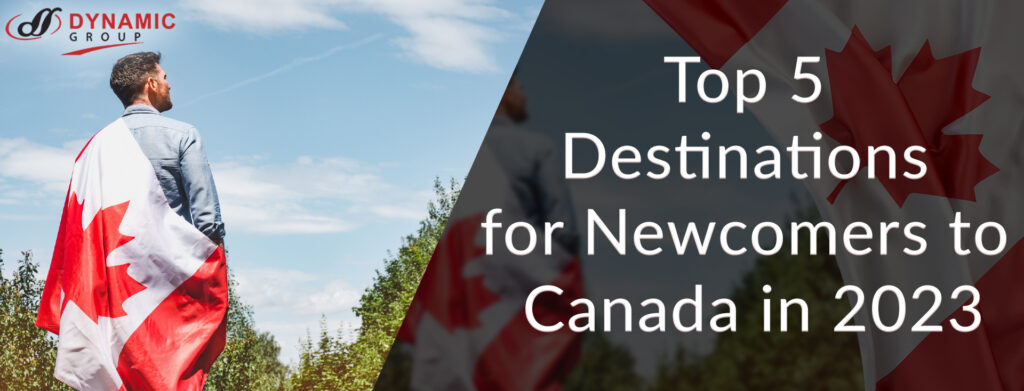Each year an Immigration Levels Plan is published by Immigration, Refugees and Citizenship Canada (IRCC) and serves as a guidance for how many immigrants will be permitted to enter Canada each year. It offers a breakdown of immigrants from the next three years by economic class, family class, and humanitarian class programs. It will display estimations for 2023, 2024, and 2025 this year.
According to the Immigration and Refugee Protection Act (IRPA), which is Canada’s primary immigration law, the government is required to declare this by November 1 of each year. Following the most recent federal election on September 20, 2021, the first Immigration Levels Plan was announced in February of 2022.
Justification for this year’s two announcements
Instead of the regularly scheduled announcement due by November 1, 2021, the
2022-2024 plan was not publicly disclosed until February 2022.
Parliament did not assemble again following the election until November 22, 2021, and even then it only met for 19 days before the Holiday break. In these circumstances, the proposal must be disclosed in accordance with IRPA within 30 days of Parliament reconvening. Parliament reconvened on this case in the middle of January 2022.
The administration will proceed with the most recent Immigration Levels Plan release on time now that Parliament is in full gear.
The current Immigration Levels Plan
Canada has set a target of bringing in 431,645 new permanent residents overall through all immigration classes in 2022, according to the Immigration Levels Plan for 2022–2024. By 2024, this goal will gradually rise to 451,000 new permanent residents.
Canada has already accepted more than 300,000 new permanent residents this year. The majority of them are graduates of programs for people from economic class. 241,850 immigrants, or around 60% of all immigrants, are the target number for immigrants from the economic class in 2022. The 2022 plan also seeks to bring in 105,000 immigrants from the family class and 8,250 from the humanitarian and refugee classes.
These goals may all change with the publication of the new Immigration Levels Plan for 2023–2025, and they are no longer the basis for IRCC immigration targets.
What to anticipate?
The Immigration Levels Plan often includes fresh increases, and they are at their greatest levels ever right now. For instance, the overall objective for 2016 was 250,000 immigrants less than ten years ago. Even in the midst of the pandemic’s uncertainty, IRCC set the record for the greatest number of permanent residents ever in 2021, totaling over 405,000.
The overall goal currently set for 2023 is 447,055, with a very slight increase to 451,000 in 2024.
In order to produce an immigration levels plan that is balanced in how permanent residence slots are distributed in each class and following program, IRCC collaborates with numerous other governmental ministries and partners.
As some provincial immigration ministers have criticized the existing plan for not assigning enough spots to Provincial Nomination Programs (PNPs), which they think are better suited to target the skilled immigrants necessary for strengthening the workforce and making up for shortages in Canada’s labour force, Minister of Immigration Sean Fraser stated in a June interview with CIC News that he would consult with the provinces to better comprehend their labour market needs.
The minister also predicted that goals might eventually reach 500,000 new permanent residents annually. He did not say when, though.
“Look, I wouldn’t put it on the clock,” he said. “I think we will get there.
We’re growing in excess of 1% of our population through the existing track.
That trajectory is going to continue. I don’t know the exact year we’re going to cross that threshold [500,000 immigrants per year]. It’s going to be based on the needs of communities.”
Why does Canada seem to be accepting more immigrants?
In order to achieve its purpose to welcome and support immigrants in order to strengthen the economy, reunite families, and offer humanitarian aid, IRCC developed the Immigration Levels Plan in conjunction with numerous government departments.
The economy of Canada needs new immigrants in particular because they make contributions through their labour and income tax payments. These taxes, for instance, are used to fund pensions, healthcare, education, and infrastructure. Baby boomers, individuals born between 1946 and the beginning of the 1960s, are now reaching retirement age in Canada, where the population is ageing. An elevated number of immigrants will assist Canada in maintaining its high living standards.
Do you see yourself making Canada your permanent home? Get in touch with Dynamic Group, the best immigration consultant. If you want to immigrate to Canada, our trained experts can help you do it quickly and easily.





